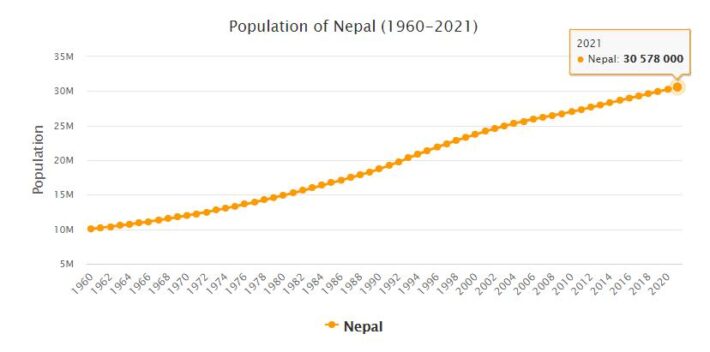Yearbook 2012
Nepal. When Nepal was visited by China’s Prime Minister Wen Jiabao in January, the two countries agreed in a joint agreement that Nepal should not allow its territory to be used for “anti-Chinese or separatist activities”, which was a clear signal to exiled Tibetans to stay away from Nepal.
A month later, the process of integrating parts of the former Maoist guerrillas into the country’s regular army began. Of the more than 19,500 former rebels who have been in UN-supervised camps since the peace treaty was signed in 2006, at least 9,000 expressed a desire to become part of the government army. It was significantly more than the 6,500 Maoist rebels that the major political parties, including the large Maoist party, agreed in November 2011 to try to integrate. About 7,300 former Maoist rebels had instead opted for financial assistance and other assistance to return to civilian life.
- AbbreviationFinder.org: Provides most commonly used acronyms and abbreviations for Nepal. Also includes location map, major cities, and country overview.
In March, the army entered and took control of the areas where the former rebels lived. The reason the army entered the camps was that riots had erupted there as a result of contradictions between exrebells and their commanders, who had hitherto controlled the areas. According to information, the commanders must have stolen equipment from their former soldiers and pleaded guilty to corruption. Many former rebels are said to have welcomed the arrival of the army.
When the deadline for the incumbent Constituent Assembly (which also serves as the country’s temporary parliament) to present a proposal for a new Nepalese constitution expired on May 27, Prime Minister Baburam Bhattarai of the Maoist Party of UCPN-M was forced to announce new elections. After four deadlines had been extended on four previous occasions, the Assembly, which was elected in 2008, had on 24 May finally been denied by the country’s highest court for a further extension of the mandate. The major stumbling block among the parties to the work on a new constitution had been whether Nepal should be divided into ethnically based administrative sections or whether the country should rest on multiethnic grounds.
Bhattarai announced elections until November 22, but by the end of the year no election had yet been held. The country’s electoral commission stated that it would be held as soon as spring 2013. Meanwhile, Bhattarai remained as head of government in an expedition ministry, consisting of representatives of all former government parties except three who resigned in protest against Bhattarai remaining in the prime minister’s post. Popular street protests also erupted as Bhattarai formed a new transitional government. The opposition Nepalese Congress Party refused to recognize the government and its right to call for election. The Congress party demanded that a unifying government be set up before an election date could be set.
In July, a man was sentenced to 170 years in prison for trafficking by a Nepali district court. The man was found guilty of selling young girls to brothels in India for prostitution. It is a widespread and serious problem in poor Nepal that many young men and women end up in prostitution. About a quarter of a million Nepali girls and young women are believed to be prostitutes in India.
In September, at least nine people were killed and two were missing since an avalanche reached more than 8,000 meters at Mount Manaslu in the Himalayas. Among those killed were four Frenchmen, a Canadian, a German, an Italian, a Nepalese and a Spaniard. It was the worst avalanche accident in Nepal since 2005, when 18 people were killed at Kang Guru mountain.
The same month, 16 passengers and three crew members were killed when an airplane crashed shortly after takeoff at Kathmandu Airport Tribhuvan. Among the dead were seven Britons, five Chinese, four Nepalese and the Nepalese crew. Fatal air traffic accidents are common in Nepal.
Population 2012
According to countryaah, the population of Nepal in 2012 was 27,014,920, ranking number 49 in the world. The population growth rate was 0.000% yearly, and the population density was 188.4550 people per km2.
